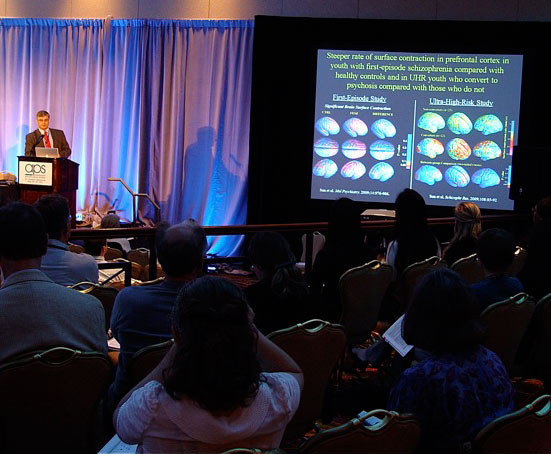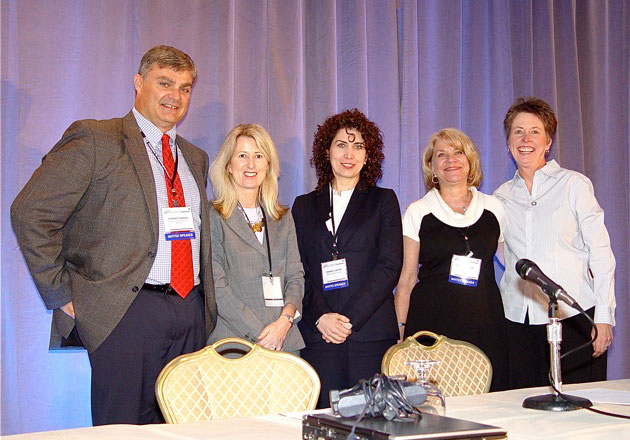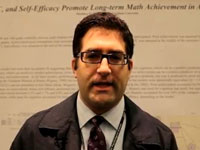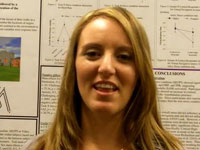Leading Researchers Discuss Current Directions in Schizophrenia Research
Today, five distinguished researchers came together to discuss the latest research on schizophrenia, a debilitating mental disorder that affects millions of people. If there’s one thing that all five can agree on it’s that schizophrenia research has come a long way.
According to Robin Cautin, a psychological scientist from Manhattanville College who provided a brief history of schizophrenia research, most research conducted in the early twentieth century was based on trial and error. Cautin discussed the work of psychologist David Shakow, who revolutionized clinical research on schizophrenia. Shakow introduced a rating system for classifying patients and created strict standards for clinical studies. He was also known for his interdisciplinary approach.
“Shakow recognized that the complexity of the condition required a complex approach,” says Cautin.
The influence of Shakow’s work was evident in the presentations that followed. Tyrone Cannon, a neuroscientist from University of California at Los Angeles presented preliminary results from a neuroimaging study in which he and his team investigated synaptic pruning, a process where the number of connections between brain cells decreases during adolescence
“People who convert to psychosis have a distinct pattern,” says Tyrone. “It seems to reflect an underlying exaggeration of the pruning that occurs during normal adolescent development.”

Tyrone Cannon speaking on Structural and Functional Brain Abnormalities in Schizophrenia.
Ann Kring, a psychological scientist from the University of California at Berkeley, discussed the role of emotion in schizophrenia. According to her, many Schizophrenia sufferers display fewer outward signs of emotion than unafflicted individuals. Sufferers also have deficits in their ability to anticipate and remember pleasure.
Jill Hooley, a clinical psychologist from Harvard University, talked about the social factors of schizophrenia.
“The majority of patients with this disorder do not marry,” she says, and the lack of marriage reflects the difficulty that many Schizophrenia patients have with social relationships. But Hooley mentioned some studies which have demonstrated that social-skills training can improve patients’ social functioning and reduce their rate of relapse. Yet, she says researchers must remain “cautiously” optimistic about these results.
The symposium ended with a review by symposium Chair Elaine Walker, an investigator from Emory University who discussed the role of hormones and the stress response system in adolescent development. Because most cases of schizophrenia emerge during adolescence, these systems are affected by the disorder and provide additional research avenues.

From Left to Right: Tyrone Cannon, Jill M. Hooley, Robin Cautin, Elaine Walker and Ann M. Kring.
While there is much more research to be done, the researchers at today’s symposium demonstrated that scientific knowledge of schizophrenia has dramatically increased since the disorder was first characterized in the early 1900s. All of speakers hope that their efforts will lead to a better understanding of schizophrenia and eventually to a better standard of living for the millions of people who must endure it every single day.





APS regularly opens certain online articles for discussion on our website. Effective February 2021, you must be a logged-in APS member to post comments. By posting a comment, you agree to our Community Guidelines and the display of your profile information, including your name and affiliation. Any opinions, findings, conclusions, or recommendations present in article comments are those of the writers and do not necessarily reflect the views of APS or the article’s author. For more information, please see our Community Guidelines.
Please login with your APS account to comment.